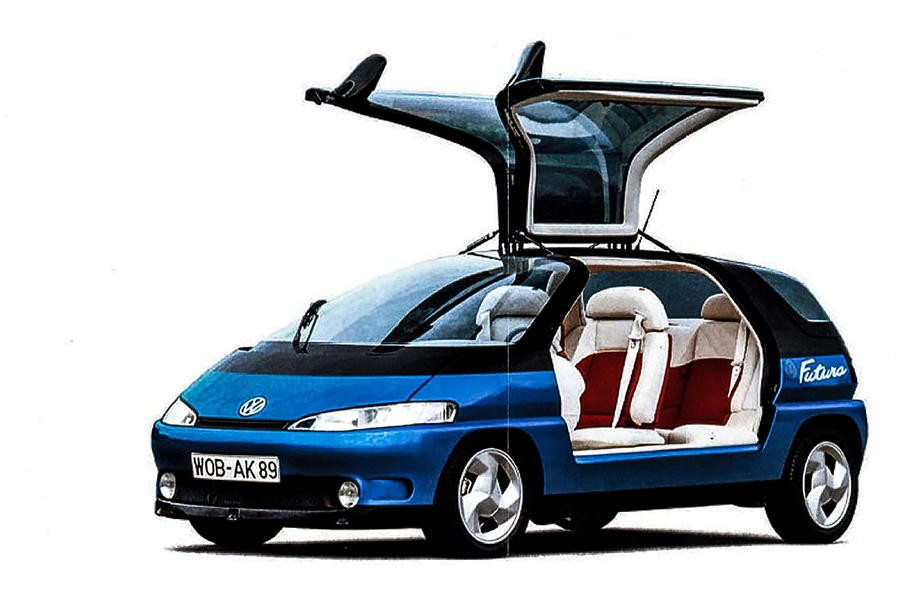Hindsight tells us the Volkswagen Futura concept unveiled at the 1989 Frankfurt motor show didn’t really come close to presaging the way the Volkswagen Golf would look in the 21st century. However, the show car was bristling with forward-looking technology, some of which is only now being introduced to production models.
The Futura had a frugal, downsized engine, could park autonomously and used radar to monitor its position in relation to other traffic and operate early examples of the kind of safety technology that’s now commonplace.
Autocar’s technical editor, Howard Lees, had an in-depth look at the Futura and described its styling: “Volkswagen chose a smooth, one-box shape for the Futura, its long, sloping windscreen echoing that of the Renault Espace.
"A pair of gullwing doors extend to meet at the roof centre line, the lower sections of which disappear into the door sills in BMW Z1 fashion. These doors combine with the large windscreen and rear hatch to create a huge glass area.
“The glazing uses a holographic foil between two layers of laminated glass which is transparent to the driver. This, with infrared-reducing glass, filters out 60% of the heat radiation from sunlight. Both the doors and rear hatch can be removed to create an open-topped leisure vehicle with a T-shaped roll-over frame.”
The Futura was powered by what VW regarded as “the engine of the future”: a 1.7-litre four-cylinder petrol unit with a scroll-type supercharger. Although it developed a modest 82bhp, it was capable of exceptional fuel economy, with a claimed average of 61.3mpg.
Four-wheel steer was “programmed according to vehicle speed to improve stability in side winds, over ruts and with variable tyre grip under braking”. It also enabled the Futura’s party piece. “Futura can park in the tiniest spaces,” wrote Lees. “What’s more, it does it automatically; all the driver has to do is stop next to a parking space and push a button and the Futura parks itself.
“It pulls this trick off by combining electronic throttle, parking brake and automatic transmission control with the electrically powered steering of all four wheels. Laser sensors scan the parking space, while ultrasonic distance sensors provide the control system with obstacle clearance information. Having built up a picture of the parking space, Futura decides how best to park itself and then simply gets on with it.”
Inside, VW was no less innovative with the Futura. The rear seat could be transformed into a child’s safety seat at the flick of a lever, and the driver was fed information via digital readouts combined with a bar-type display that showed the recommended speed range based on the traffic situation.
The background colour of both displays changed from black through yellow to red if the Futura got too close to the vehicle in front. Further novelties included a noise cancelling system in the cabin and a new evolution of more effective anti-lock brakes.






Join the debate
Add your comment
"The background colour of
I wish more German cars were fitted with this.
VW actually had it spot on it some respects - the small engine with high MPG, self parking, standard tinted windows.
The design - a lot of cars are moving towards a mono/2 box hatchback design, although one thing we don't get is the high visibility glasshouse - with thick A pillars and, on Golfs at least, thick C pillars. Gullwing doors would also be a step too far for traditional Golf buyers.